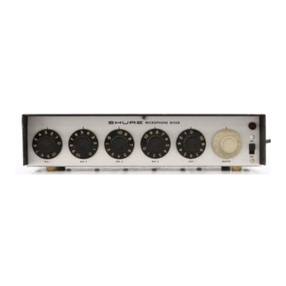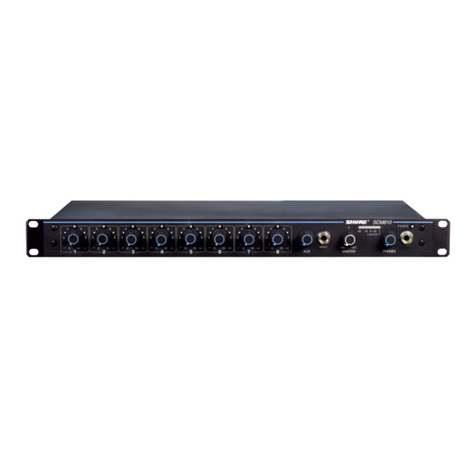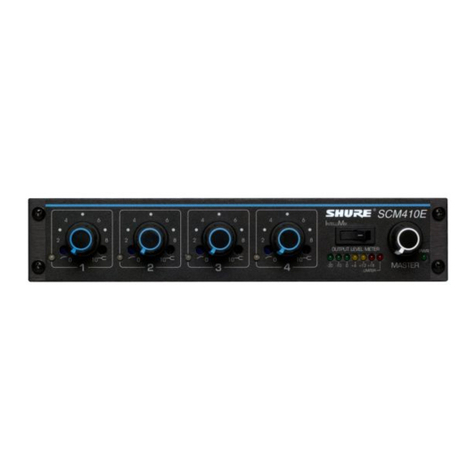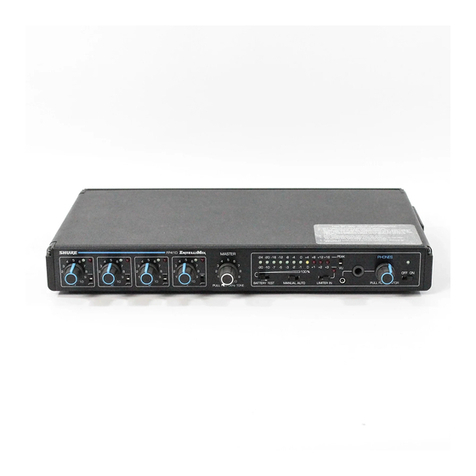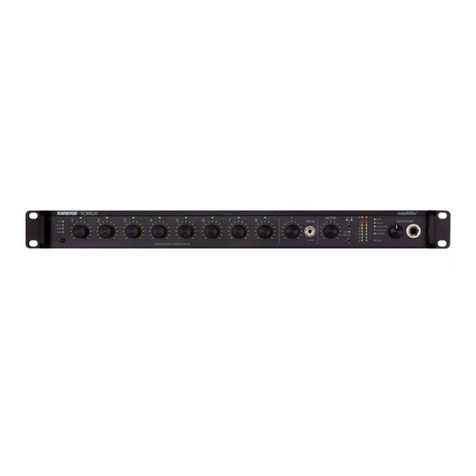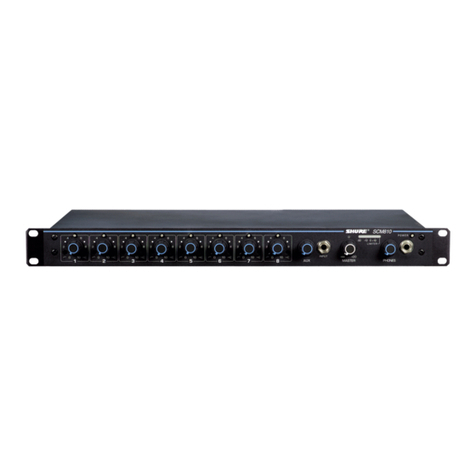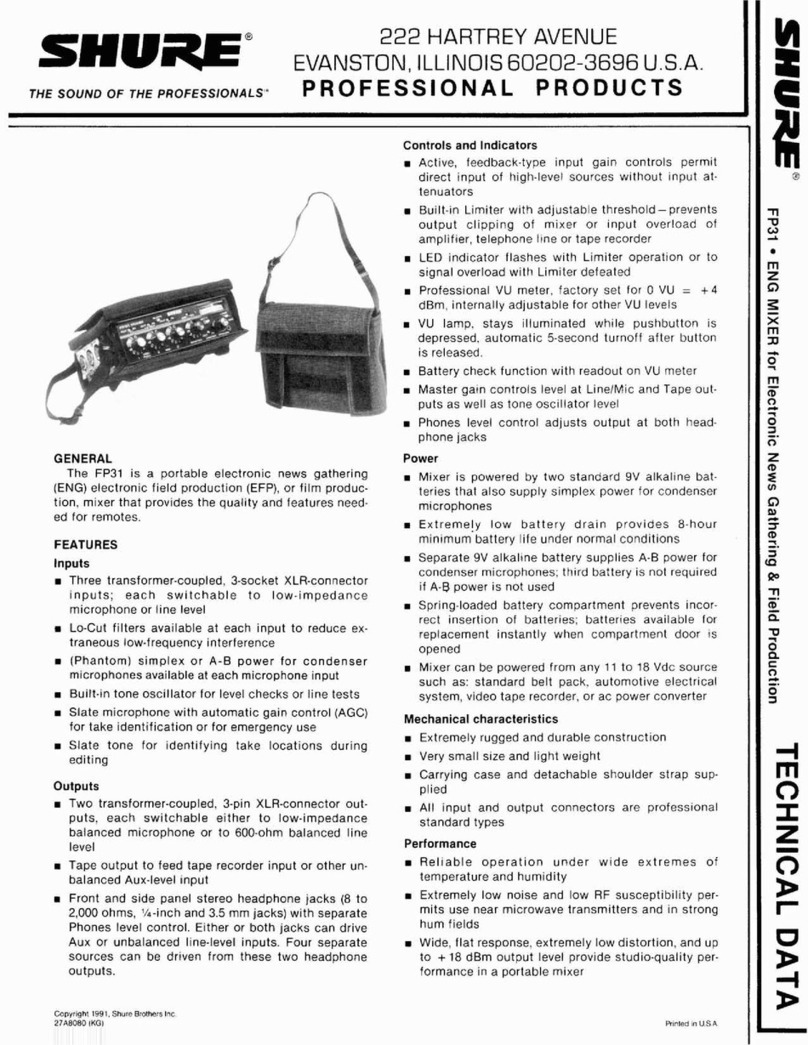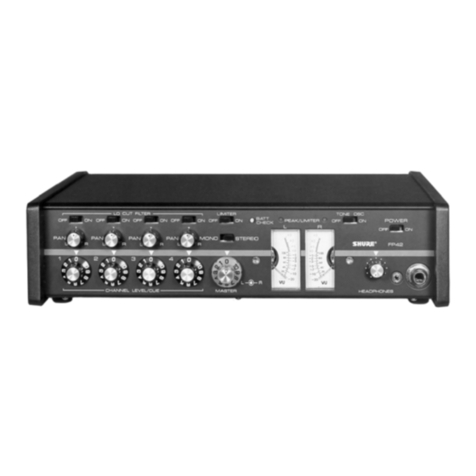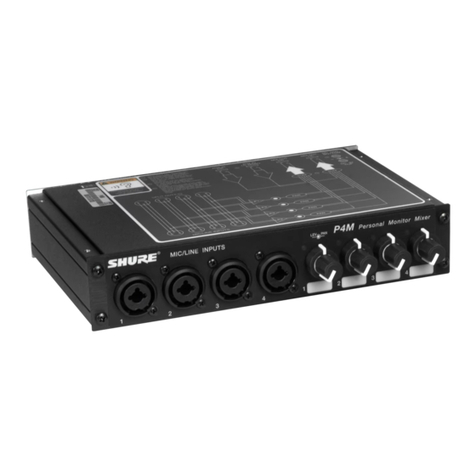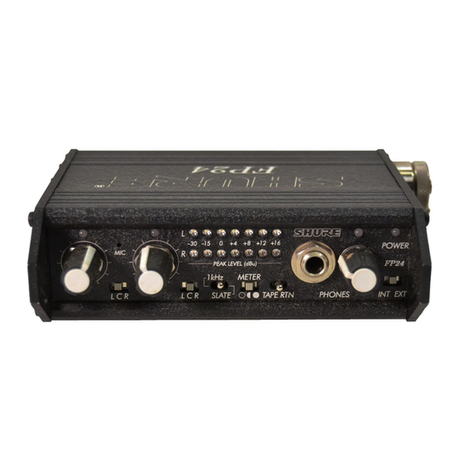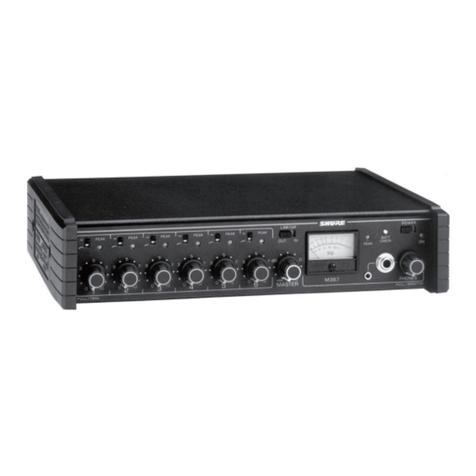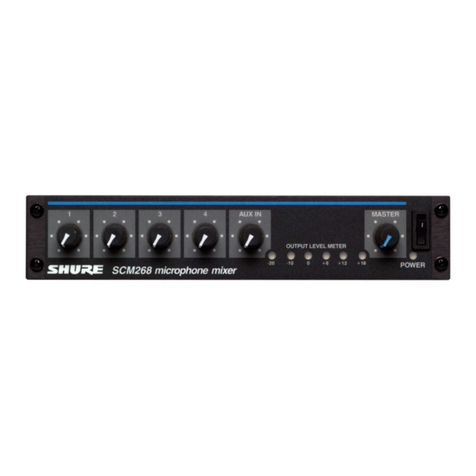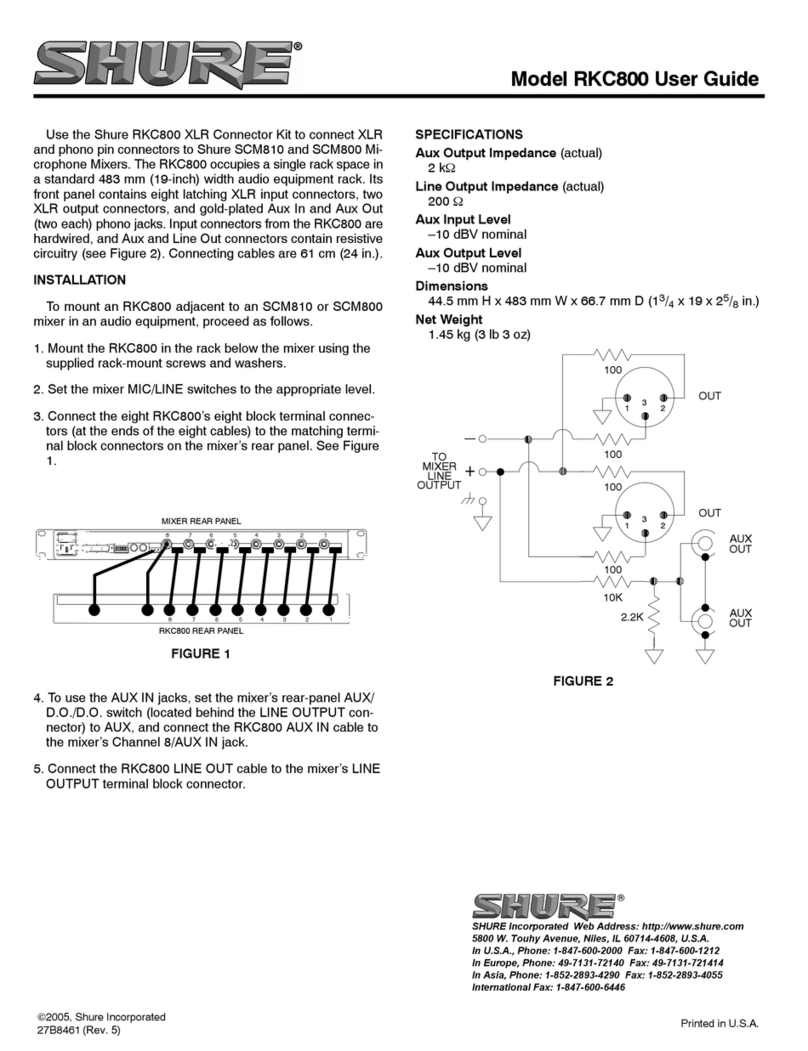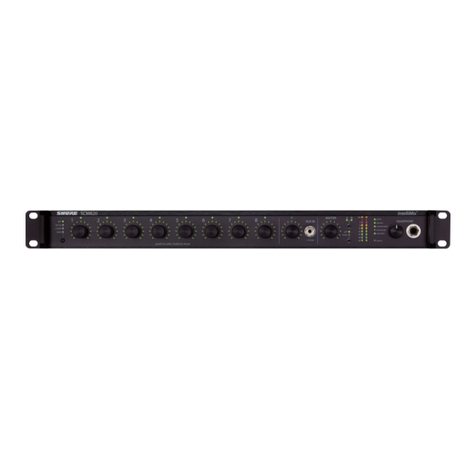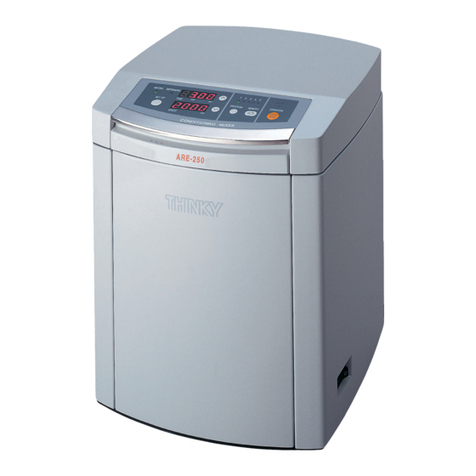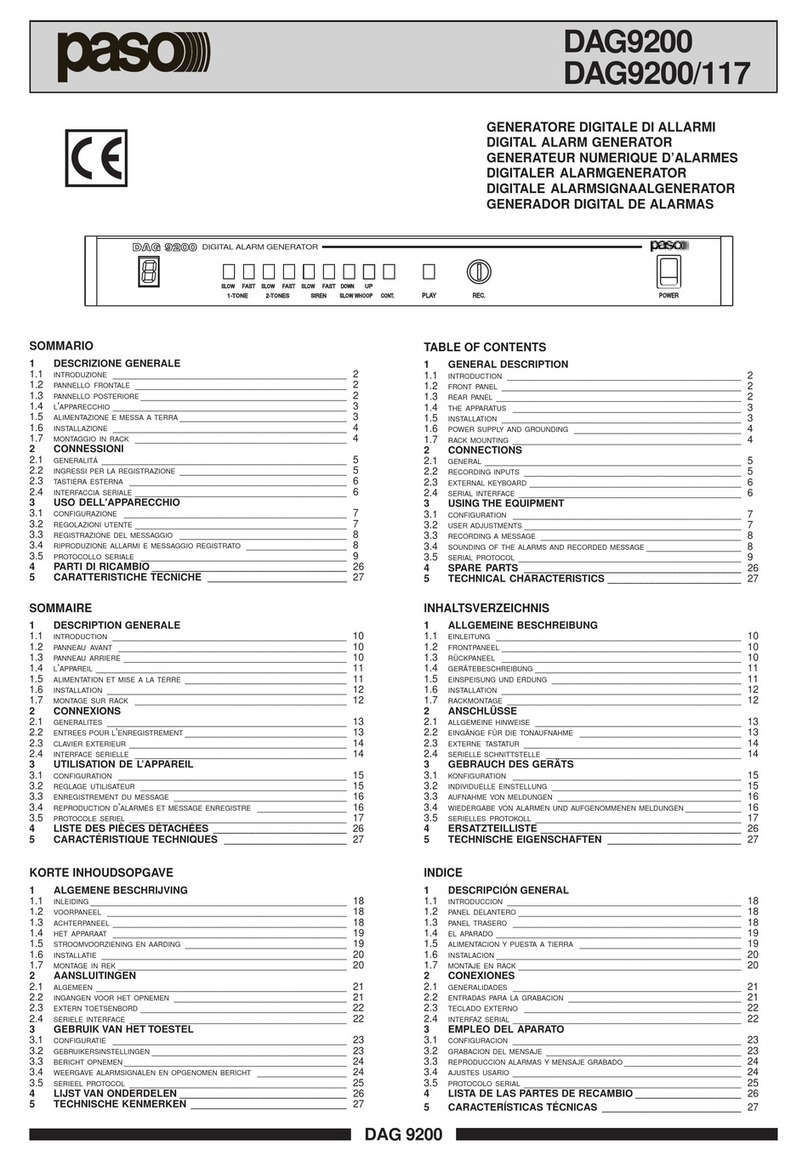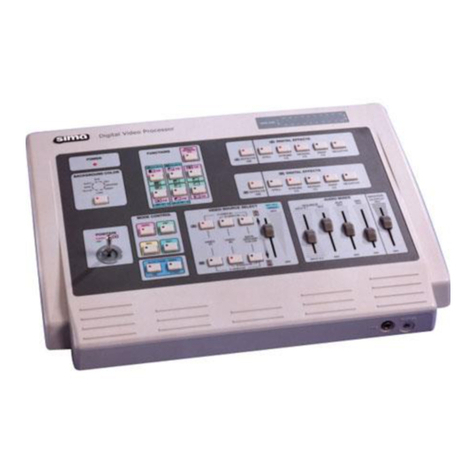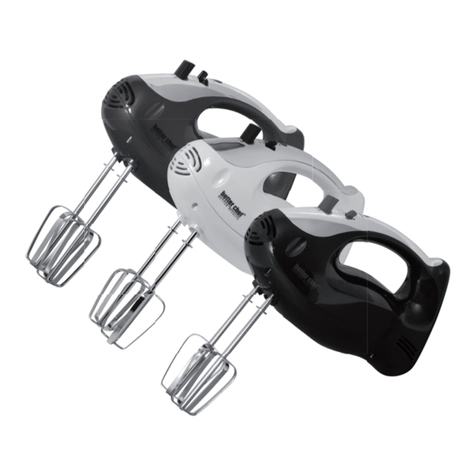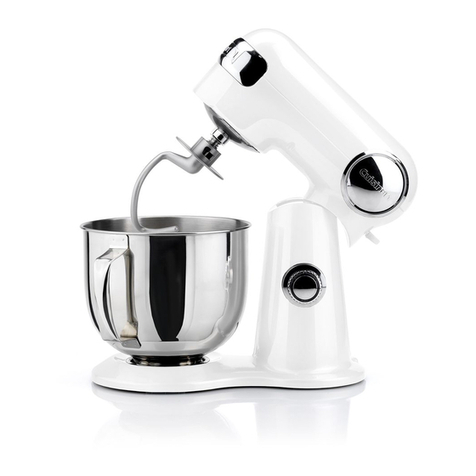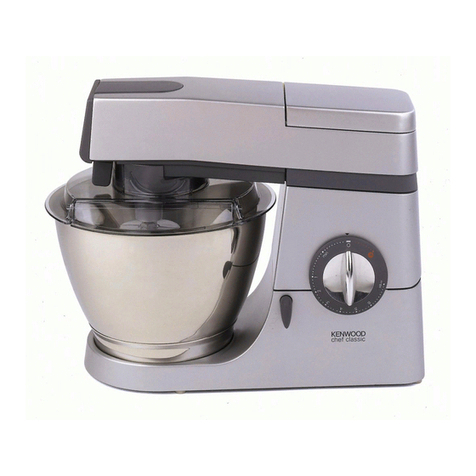
5
pressed again. (Note that this mode will drain batteries faster
than the Timed mode.)
3. If greater clearance for the Input Channel 1 Gain knob is de-
sired, the left end cap can be removed, rotated 180°, and re-
placed. Note that in this configuration, the end cap will not pro-
tect the gain knobs if the mixer is dropped.
4. Connect microphones, wireless microphone receivers, or oth-
er audio sources to the desired Input channel connectors on
the rear panel.
5. Position each Mic/Line Input switch based on the level of the
incoming source.
6. Connect the amplifiers, camcorders, DAT machines, wireless
microphone transmitters, or other equipment to the Output
XLR connectors on the rear panel.
7. Position the Mic/Line Output switch based on the input level
requirements of the equipment connected to the switched
M367 output (the other output is Line Level only).
8. If a “tape return” or Monitor In feed into the M367 is required,
connect a phone plug to the rear–panel Monitor In connector.
The signal on this connector typically comes from the audio
output of the device being fed by the M367.
9. Plug headphones into the stereo 1/4 in. or 3.5 mm mini
Phones jacks on the right side of the front panel.
NOTE:
The two Phones output connectors may be used sepa-
rately, simultaneously, or as auxiliary feeds to other equip-
ment.
10. To interconnect two M367 or other Shure mixers, plug a sing-
leshielded mix bus cable into the Mix Bus connectors of both
mixers (Figure 3).
NOTE:
When two M367 mixers are interconnected via the Mix
Bus, the Master gain on either mixer can be adjusted without
affecting the other mixer’s output level. This provides the
equivalent of a 12–input mixer with two separate Master output
sections.
11. Set the Master gain, Phones volume, and all Input gains fully
counterclockwise (off).
OPERATION
To operate the M367 microphone mixer, proceed as follows:
1. Apply power to the mixer by sliding the On/Off switch to the
right. The green Power LED will illuminate to indicate that the
mixer is turned on.
2. Check the mixer battery power status by depressing the front–
panel Battery Check switch. The VU meter needle will swing
between 0 and +3 VU. If the needle falls below 0 VU, less than
30 minutes of battery power operation remain.
3. Push the front–panel Phones knob inward to route the M367
audio to the headphones.
4. Slide the Limiter slide switch to the On position to protect
against output overload.
5. Position the Low–Cut Filter slide switches for each Input: UP
for flat; DOWN for low–cut on.
6. Set the Master Gain knob to the “0 dB” position
(2 o’clock). This provides unity gain for output stages.
7. Activate the 1 kHz tone oscillator by pulling the Input 1 gain
knob outward. Adjust the Input 1 gain until the VU meter
needle indicates “0”. Adjust the input levels on the equipment
connected to the M367 outputs accordingly. Push in the Input
1 knob to turn off the tone.
8. Put on headphones and carefully adjust Phones volume control
to a comfortable listening level.
The headphones circuit is capable of producing high
volume levels that can damage the user’s hearing.
Make sure the headphones volume setting is low (full
CCW) before putting the headphones on.
WARNING
9. Adjust the Input gain controls based on the incoming signal
levels. The Input Peak LEDs should flicker red only on loud in-
put peaks.
10. Observe the output on the VU meter and adjust the Master
gain to obtain the desired levels. Try to keep the average levels
around “0 VU”. The Peak LED adjacent to the VU meter should
illuminate only on loud output peaks.
The M367 mixer is now ready for use.
Connecting M367 Outputs to Telephone Lines
In the Line position, the transformer–balanced XLR outputs
can be used to drive dc–biased, “dialed up” telephone lines, al-
though there may be a slight increase in distortion. Use of the
M367 limiter circuit is strongly advised with the limiter threshold
set to +4 dBm. Modification of the M367 output impedance to
600Ωis recommended for proper fidelity.(See the
Internal Modi-
fiable Functions
section for instructions.) When connecting the
M367 to a telephone line, an FCC–Registered interface adapter
between the mixer and telephone line is mandatory.
SUPPLIED ACCESSORIES AND REPLACEMENT PARTS
Foot Kit (4 in kit) 90S8100. . . . . . . . . . . . . . . . . . . . . . . . . . . . . . .
Fuse, 0.125 A, 250 V, Time Delay (M367) 80E380. . . . . . . . . .
Fuse, 0.063 A, 250 V, Time Delay (M367E) 80G380. . . . . . . . .
Knob, Master 95A8238. . . . . . . . . . . . . . . . . . . . . . . . . . . . . . . . .
Knob, Channel Gain, Phones 95B8238. . . . . . . . . . . . . . . . . . . .
Line (Power) Cord, (M367) 95A8389. . . . . . . . . . . . . . . . . . . . . .
Line (Power) Cord, (M367E) 95B8389. . . . . . . . . . . . . . . . . . . . .
OPTIONAL ACCESSORY
Rack Mount Kit A367R. . . . . . . . . . . . . . . . . . . . . . . . . . . . . . . . . .
SPECIFICATIONS
Measurement conditions (unless otherwise specified): operat-
ing voltage 120 Vac, 60 Hz (18
±
1 Vdc for dc test); operating tem-
perature 22
°
C (72
°
F);
input signal 1 kHz; internal DIP switches
1–7 open; Power switch on; Mic/Line switches to Line; low–cut
switches to flat; Limiter out; Phantom power off; Mix Bus to M367;
channel 1 gain full CW; channel 2 through 6 full CCW; Master full
CW; Phones level full CCW; Line output terminations 600
Ω
(pins
2 and 3); Mic output terminations 150
Ω
(pins 2 and 3); Phones
(
1
/
4
”—ring)300
Ω
to ground; Phones (
1
/
4
”
—
tip) 300
Ω
to ground;
Phones (3.5 mm) unloaded; Mix Bus 930
Ω
(M367 position)or 3.5
k
Ω
(M267 position), not connected unless specified; 1 kHz input
signal.
Frequency Response
20 to 20,000 Hz ±2.0 dB (channel controls centered)
Total Harmonic Distortion
0.25% THD at +4 dBm output, 55 to 20,000 Hz
Voltage Gain Output
Input Line Mic Phones Mix
Bus
(M367)
Mix
Bus
(M267)
Low–Z
Mic
(150 Ω)
87 dB 40 dB 103 dB 66 dB 27 dB
Line 37 dB –11 dB 53 dB 15 dB –25 dB
Monitor –– –– 12 dB –– ––
Mix Bus
(M367) 10 dB –38 dB 26 dB –– ––
Mix Bus
(M267) 50 dB 2 dB 66 dB –– ––
